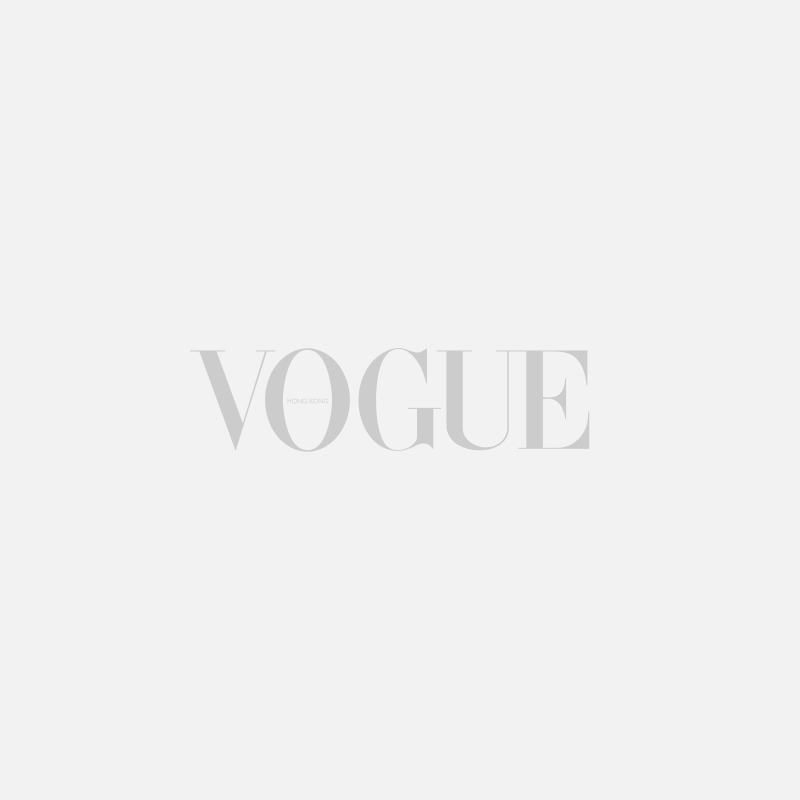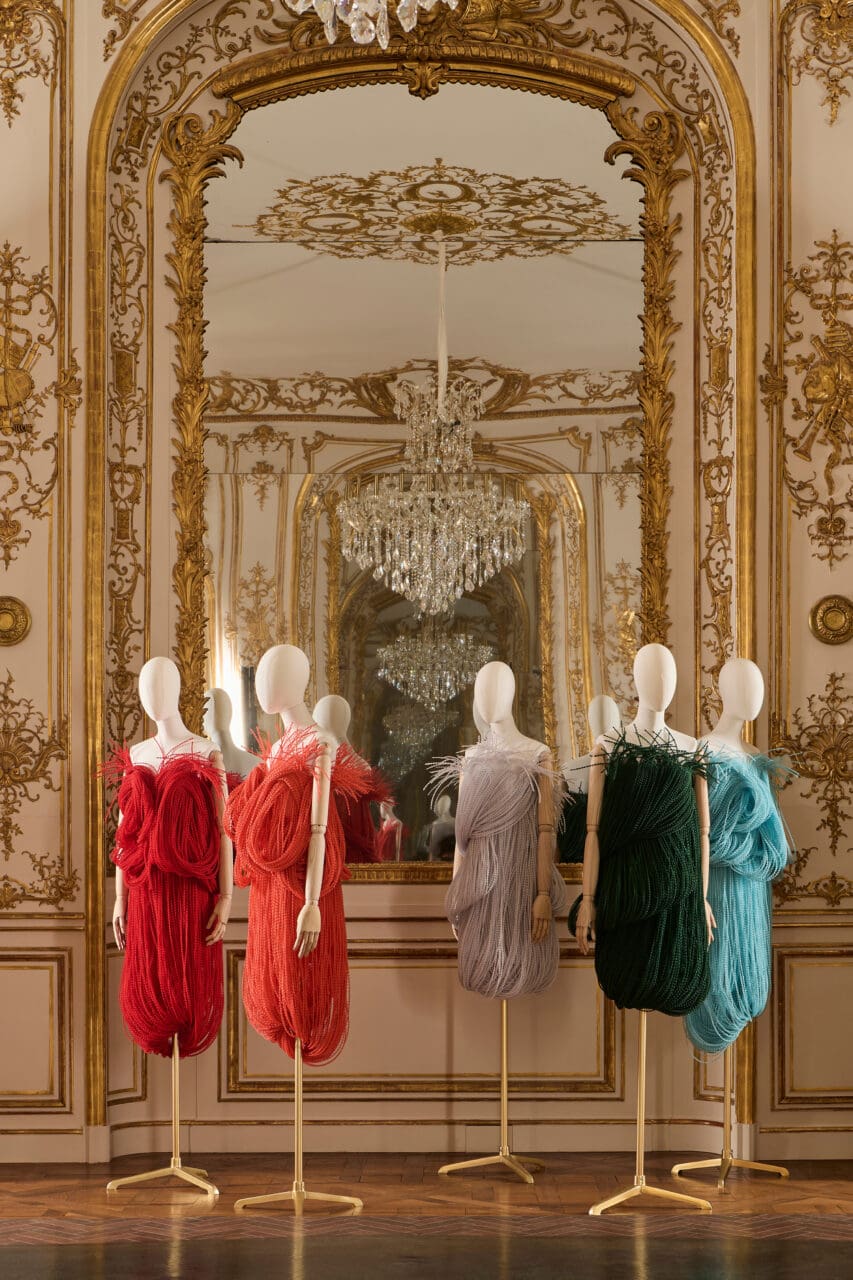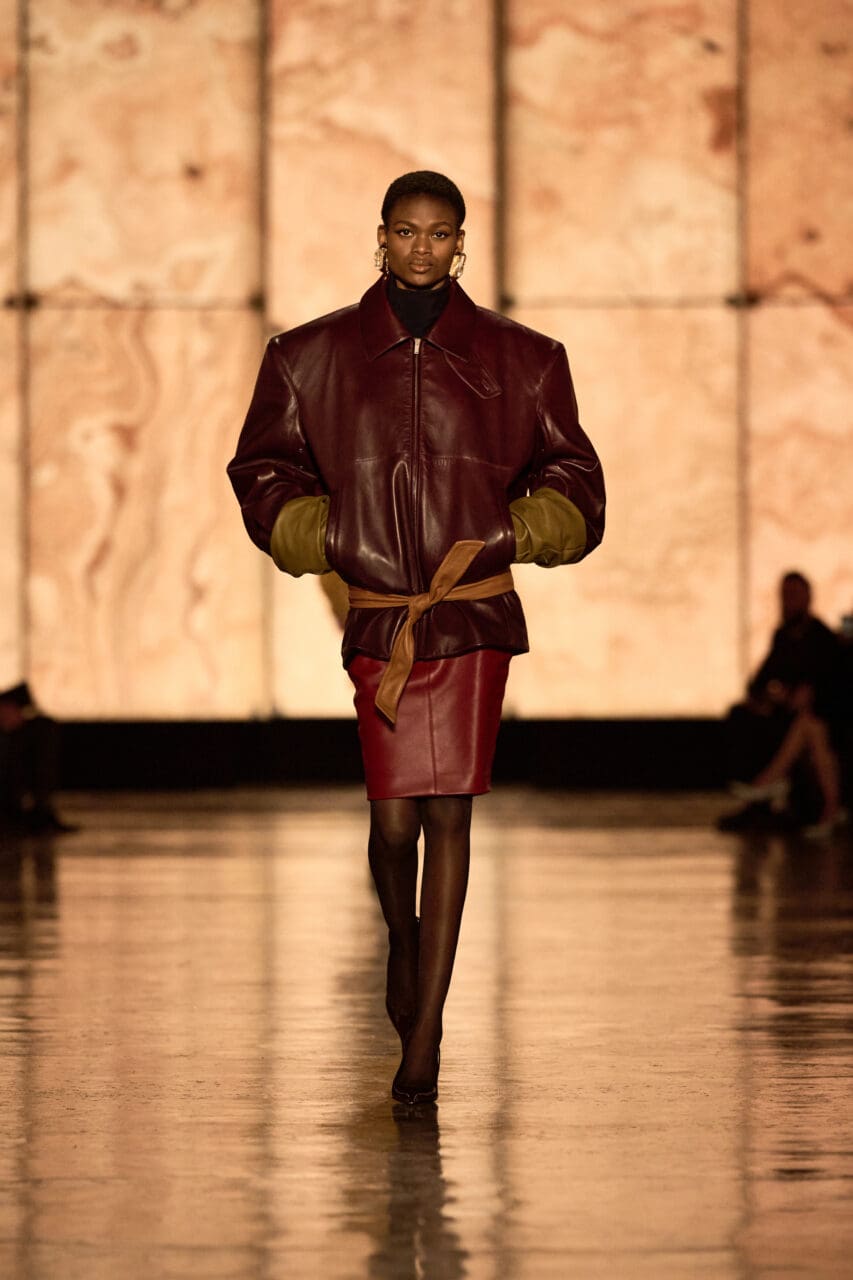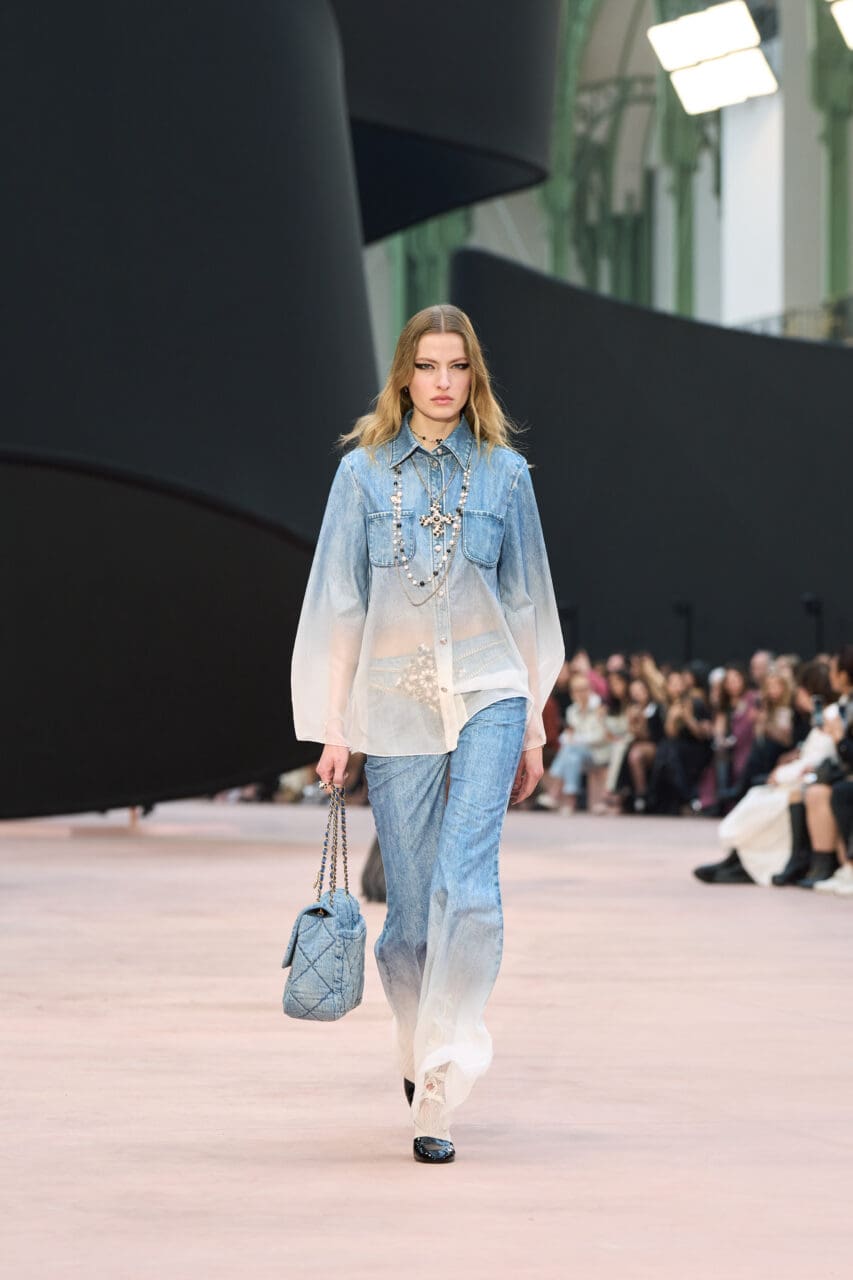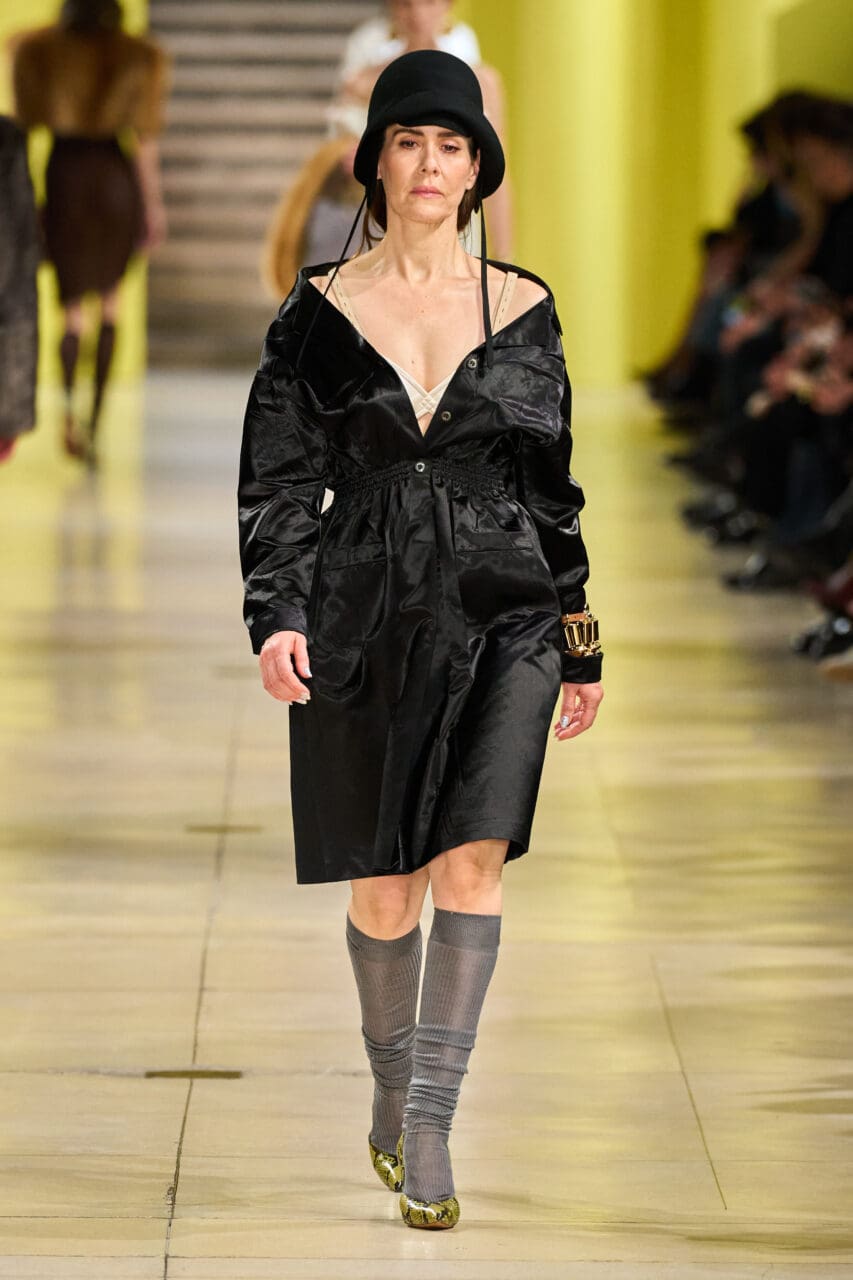This spring 2025 Fendi menswear show revealed the first collection of the brand’s 100th anniversary year: in it, Silvia Venturini Fendi transmitted multiple messages about the past, present and future of the house. “I’ve been deep-diving into the archives, and I wanted to talk about codes and symbols,” she said. A new house crest featured four sections on its heraldic shield; three of these contained the Double-F logo designed by Karl Lagerfeld, the earlier vintage Pequin stripe, and a squirrel as reference to something co-founder Edoardo Fendi would observe of his wife (and Silvia’s grandmother) Adele: that she was “as busy as a squirrel.” The last section contained a two-faced image of Janus, the Roman god of transition from what has been to what is to come—and another archive-sourced motif used by Lagerfeld during his many years here. Said Venturini Fendi: “I wanted to design a crest because I think that when you have 100 years of your story you are part of this club, let’s say, of people that have been changing the rules of Italian fashion and building something into what it is today.”
Edging the crest and running through the collection was the robust Selleria stitching adopted by the founding Fendis from Roman saddlery techniques and incorporated into their earliest leather goods. Said stitch was embossed as a check onto a brown leather overcoat, overlaid onto a gently fizzy pastel check, inlaid into denim, or inserted as a jacquard micro pinstripe. Unsurprisingly, it also featured on bags including a zippered Baguette worn across the body and a new version of the design made in a chessboard patchwork of leather offcuts which were inevitably connected by Selleria.
Fendi’s conception of her family house becoming a member of a club inspired her to reference various forms of club affiliation, including a knit Fendi soccer shirt (a nod also to the Fendi luggage used by the Italian national squad during the 1984 Euros), and rugby shirts in oversized Pequin striping. There were club ties and cricket sweaters too. Much of the attire seemed rooted in quite classical 20th century menswear forms—the check was used to fashion almost dad-like golfing blousons—but a progressive subversion was often applied through sensual touches and detailing. In rib knit and suede half-button shirting or superlight henleys, for instance, the buttons traced a line diagonally across to the left armpit rather than straight down as is conventional: “I wanted to liberate the shoulder,” said Fendi.
The signature house maestria of materiality played out through that suede shirting and same-substance trenches that billowed as lightly as any cotton voile. There were several oversized camp collar shirts in shearling that appeared cloud-like to the touch. Janus would have nodded both heads at the carefully calibrated transitions of hem that flowed down from sleeves and waistlines in multiple layers. As Fendi observed: “If you want, you can see references everywhere.” Her runway featured six mirrored monoliths—deconstructed strokes of the Double-F—which as the show progressed propelled themselves around the space like supersized Roombas to reflect the models as they too moved forward. The notion of something monumental yet also in motion seemed very deliberate.
Maybe it was fanciful, but you could detect a reference to Karl Lagerfeld in the penultimate back suit. And as well as running down through hemlines, there was also transitional continuity on the benches in the form of the house’s new CEO Pierre-Emmanuel Angeloglou, who this afternoon sat just along from his predecessor Serge Brunschwig. “We want the company to be ready for the next centenary,” observed Fendi backstage. An especially interesting one-off accessory was the large metal-clasped case in look 45. “This is a jewel box,” she clarified. It was decorated with a plan of the facade of Fendi’s founding store, fronted by five arches which conveniently symbolized the five Fendi sisters (including Silvia’s mother) who were handed oversight of the house by Adele and Edoardo in the late 1940s. “I very much like numerology,” said Fendi of the coincidence. She added: “I was thinking about Delfina [her daughter] and the new generation, so I wanted to include a jewel box. And it’s full of secrets.”
Editor
Luke LeitchCredit
Leading Image: Daniele Oberrauch / Gorunway.com